2021 is truly a major turning point for Ski-Doo. Sometimes small changes can seem insignificant at first glance, but the result is amazing… 2021 Ski-Doo Snowmobiles New. After 20 years in the snowmobile business, it takes a lot for me to be impressed, but I must admit that I am a bit overwhelmed… Over the years, each manufacturer presents us with evolutions of their products on several levels. The improvements are often notable and provide substantial improvements, but Ski-Doo sets the bar very high for the competition…
To whet your appetite, here are some of the highlights: a turbocharged two-stroke engine, a new trail suspension, new skis for trail snowmobiles, a new entry-level engine.
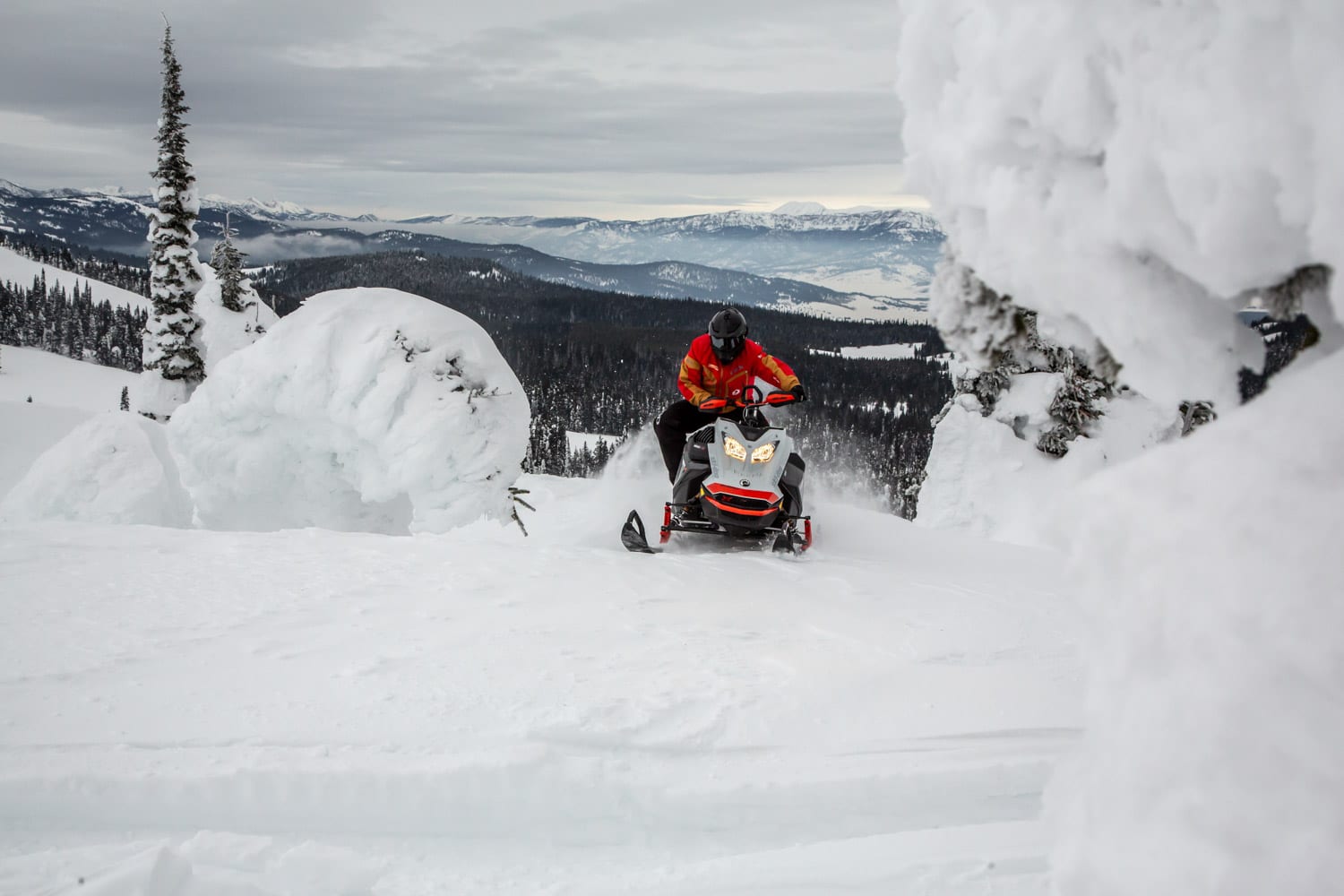
850 E-TEC Turbo!
The Ski-Doo shock wave… The arrival of the 850 E-TEC turbocharged sled simply flooded the web world… More than 10 million appearances on social networks, 3.6 million people reached, not to mention 67% of the web conversations related to snowmobiles. Never before seen!
But what is it exactly? To fully understand how it works, you need to know the specifics and constraints that influence engine performance. Enemy number one is undoubtedly altitude, and here’s why: any naturally aspirated engine, like the 850 E-TEC for example, has a maximum air absorption capacity. Much like your respiratory system, your engine takes in just the right amount of air. In fact, at full throttle, it absorbs a maximum volume, determined by its engine speed and displacement, among other things. At altitude, your engine continues to ingest the same volume of air as at sea level, however, the quantity of air molecules for the same volume is much less, so the explosion becomes less powerful, which causes a loss of power. SKi-Doo mentions a decrease of 40 horsepower at 8000 feet, which puts the 850 E-TEC at about 125 horsepower at 8000 feet. To compensate for this, engineers introduced a turbocharger to pressurize the air in the engine when the amount of molecules per volume decreases. So when you’re driving at sea level, the turbo doesn’t push any pressure, and your 850 makes 160 horsepower. When you find yourself at 3000 feet on the Chic-Chocs in Gaspésie for example, your naturally-aspirated 850 loses about 15 horsepower, while the turbo version still develops 165 horsepower and so on up to 8000 feet. The particularity of this system is that the turbo 850 never develops more power than it was designed for, it simply keeps the same power, that is to say 165 horsepower up to 8000 feet. So the engine remains reliable, since the idea behind it is simply to keep the power and not to produce more. After 8000 feet, the power decreases at the same rate of about 15 horsepower for every additional 3000 feet. Only certain Summit and Freeride models on preseason sale will be equipped with this new engine.
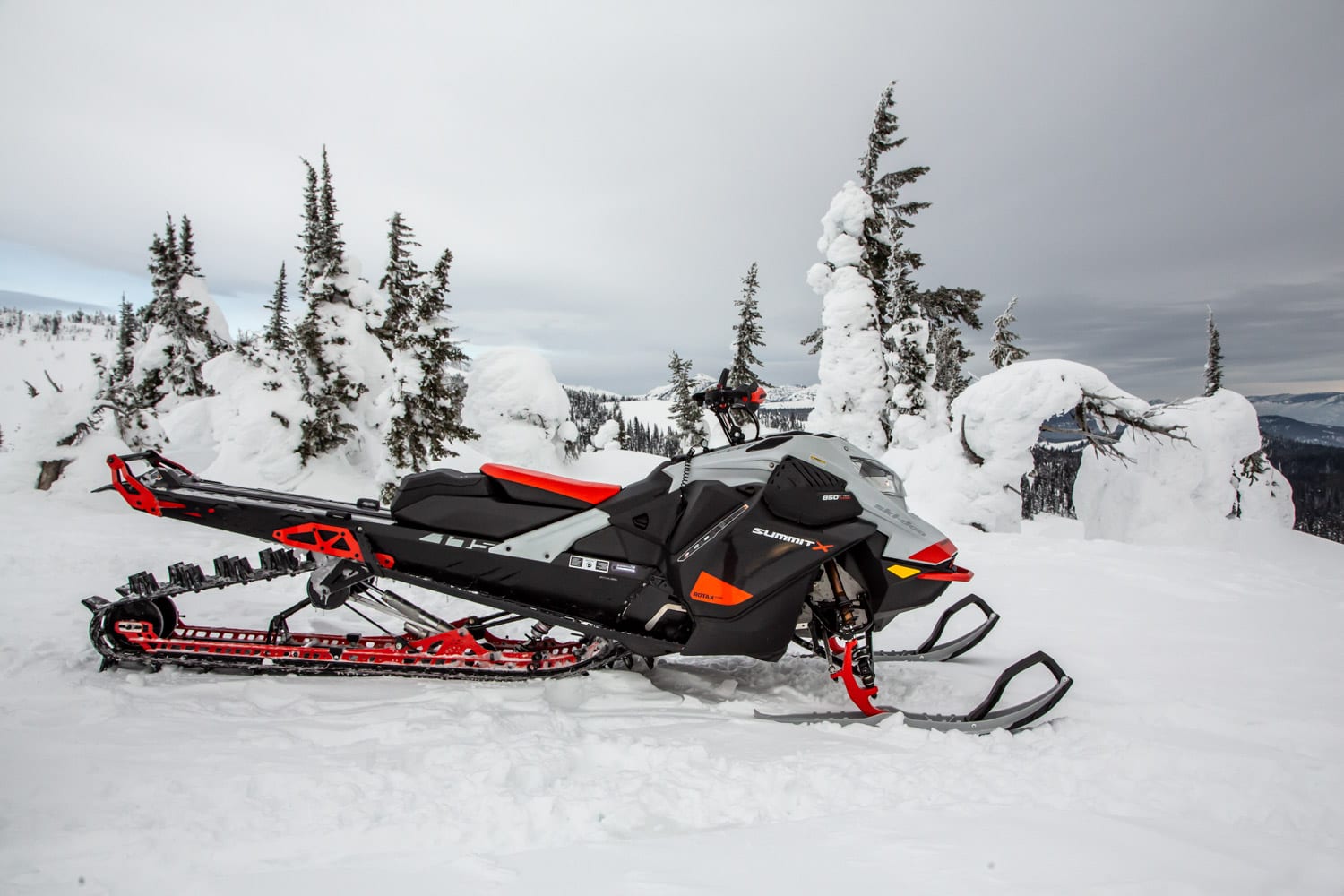
New lightweight hood
Always with the goal of offering the lightest vehicle possible, BRP introduces a new hood on its Summit X models with the Expert, Freeride and Summit X (turbo only) packages. The addition of the turbo comes with a certain weight increase, so we had to work hard to keep the excellent power-to-weight ratio. Six pounds lighter, this new one-piece hood includes an air vent located above the exhaust system.
Monitoring of the belt
The conditions in which a mountain snowmobile is used are extreme and very problematic in terms of heat. Most of the powder travel is done at low and medium speeds, which puts a lot of stress on the engine compartment. Among the most stressed components, the belt is certainly at the top of the list, and it is very difficult for the pilot to know its limits. To improve reliability, reduce belt breakage and keep the driver informed, engineers added a belt monitoring system. Using strategically placed sensors, the system monitors the temperature and overload of the belt. When the temperature reaches a predetermined limit, a signal is sent to the driver through the digital dial, which allows the driver to decrease the speed for a few moments to let the belt cool to a more optimal temperature. This system is non-intrusive, it will not diminish performance, it is up to the driver to moderate if he wants to avoid a breakage. All Summit, Freeride and Backcountry 850 atmospheric and turbo models will be equipped with this new technology in 2021.
Slimming cure
In the race to be lighter to improve maneuverability, the Summit SP and X are equipped with new lighter ski rims. This new geometry offers a more predictable ride and improves stability on the mountain side. In the same vein, a short tunnel has been added to the Summit SP and X, but also to the Freeride, to facilitate snow evacuation and improve maneuverability in powder.
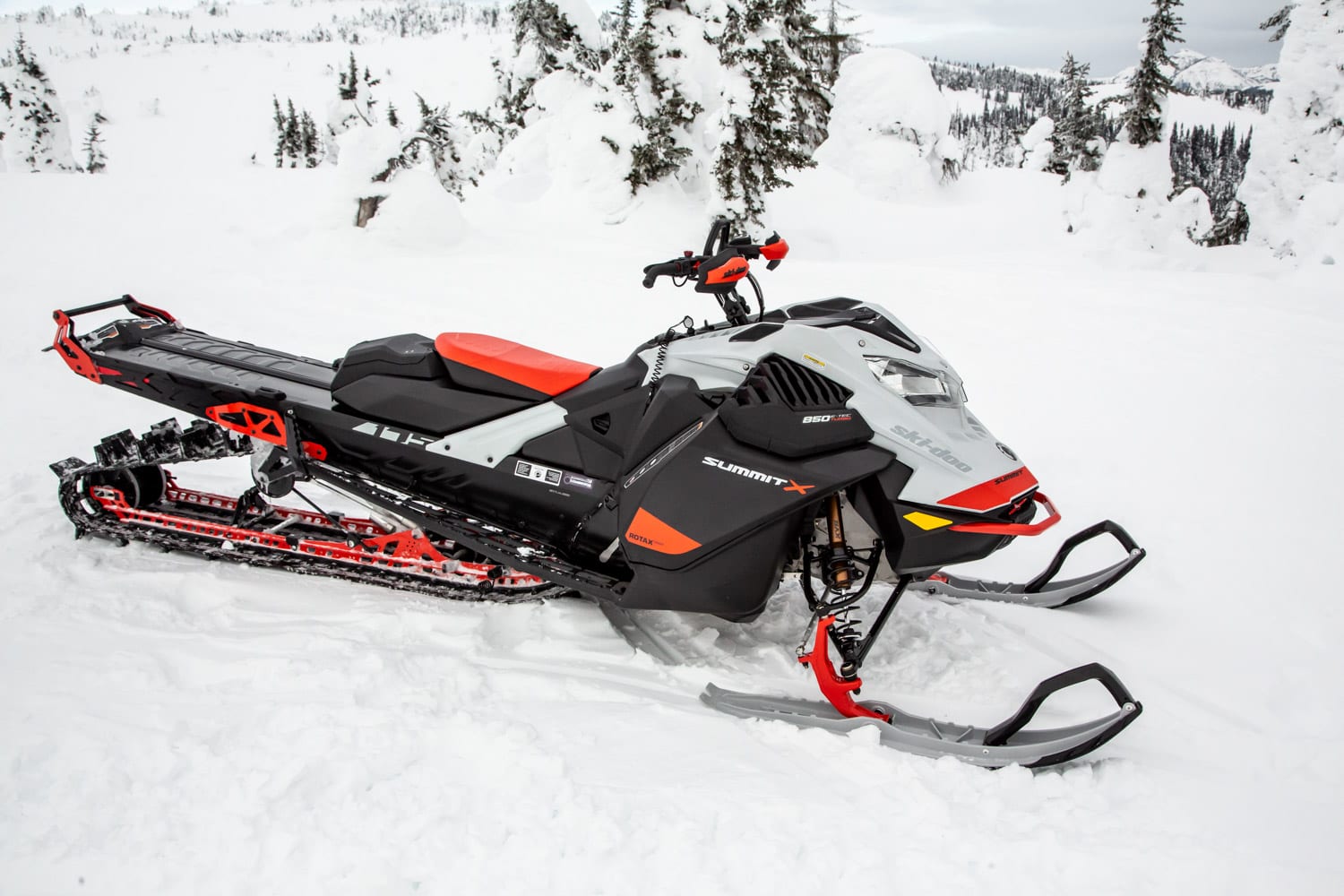
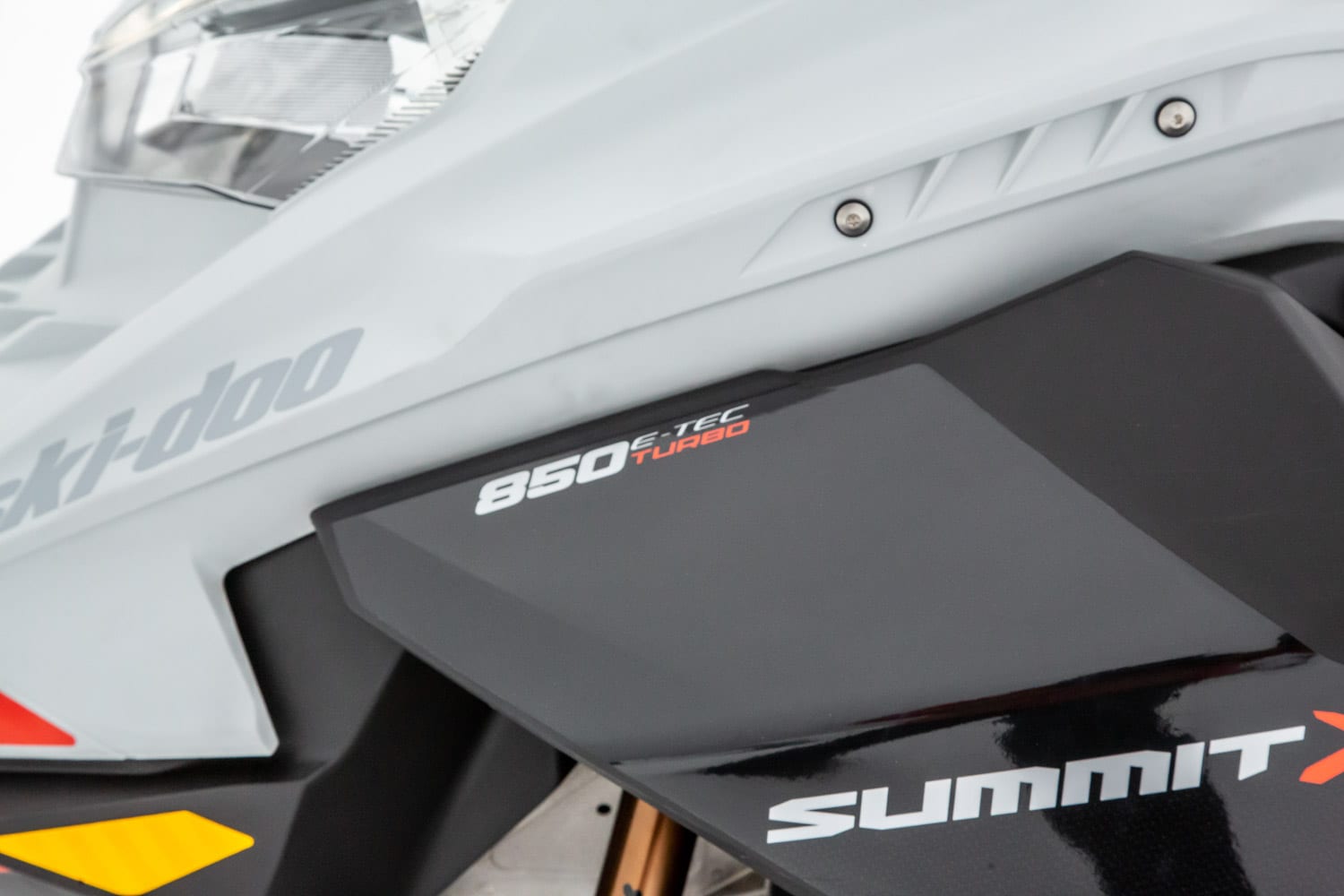
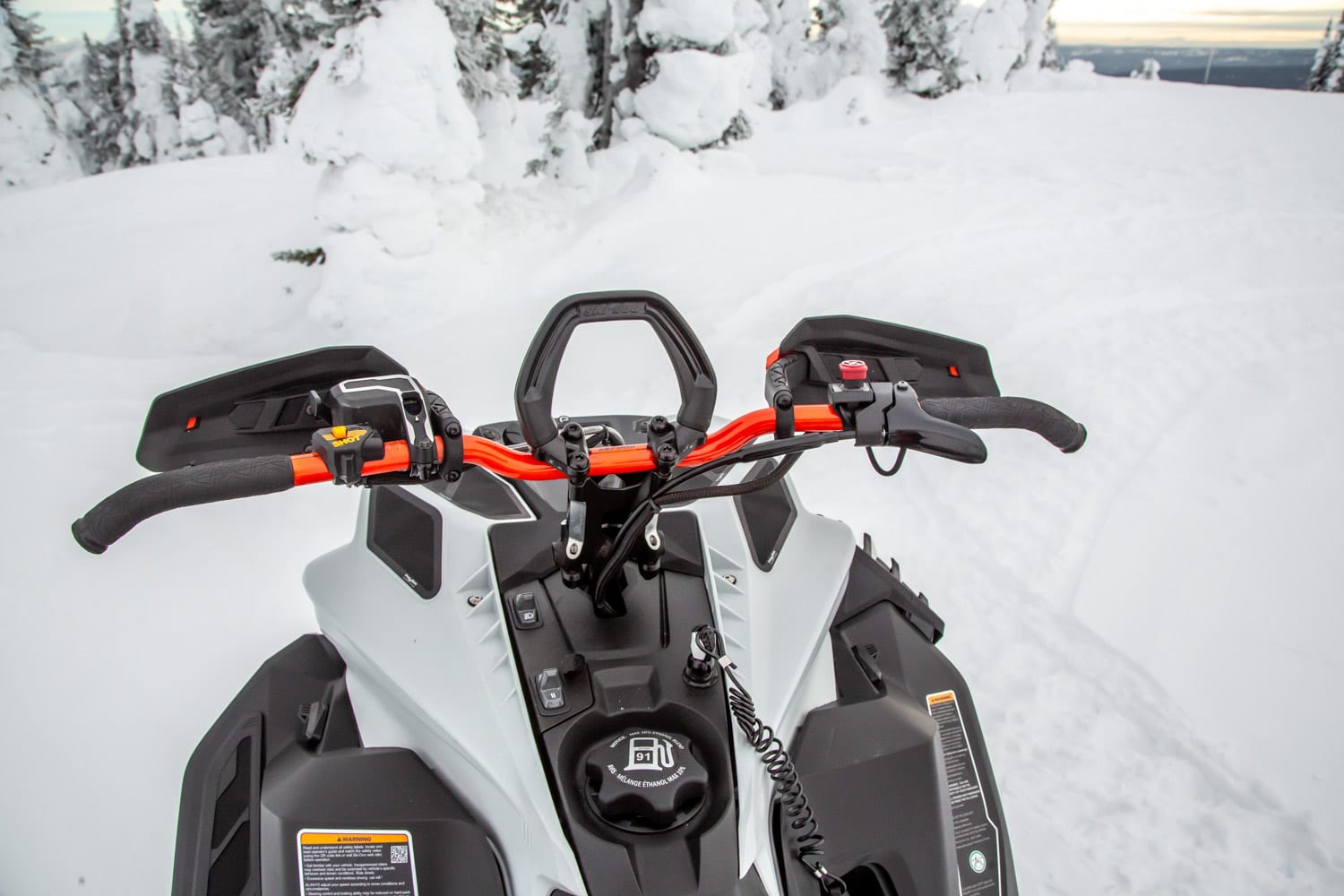
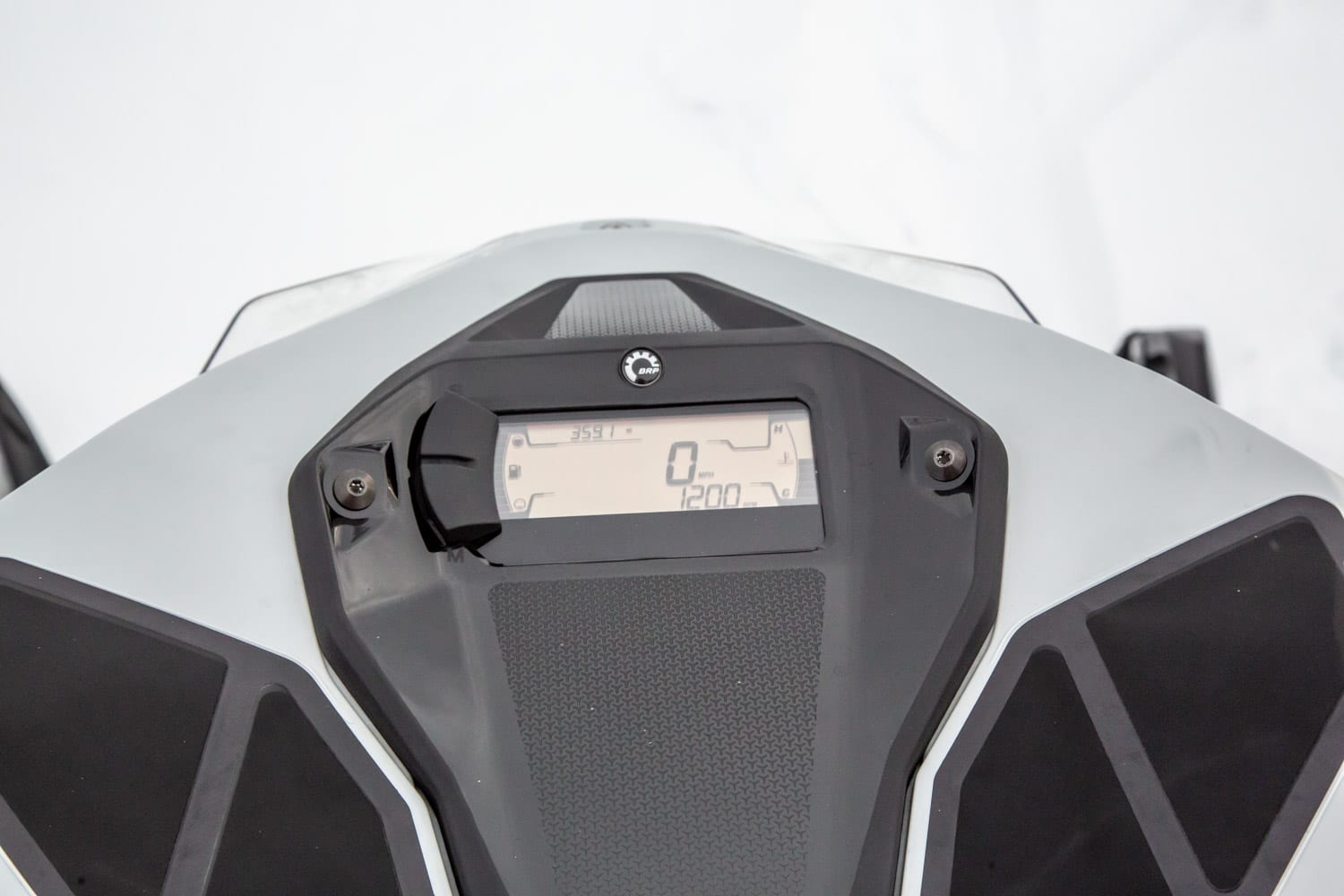
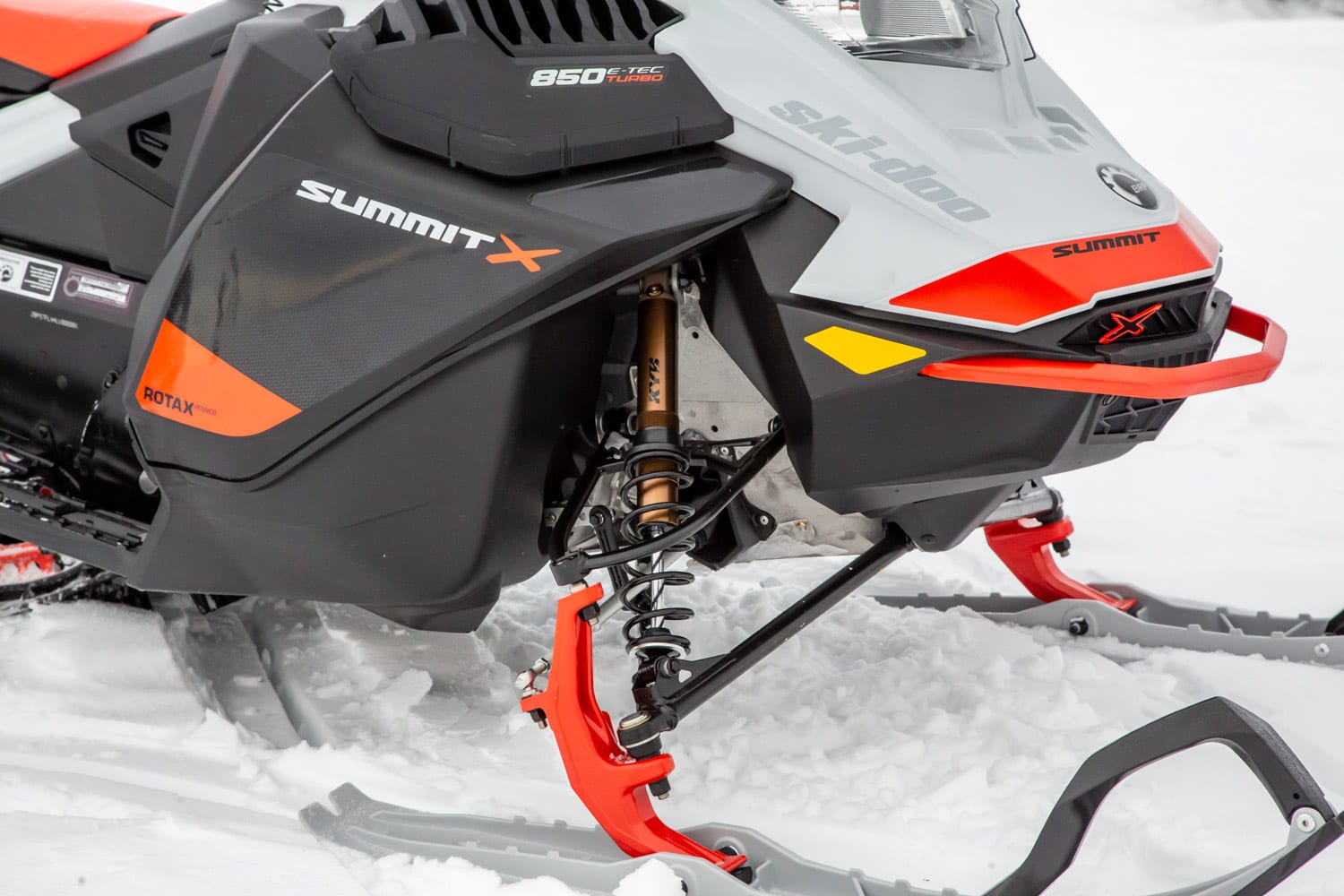
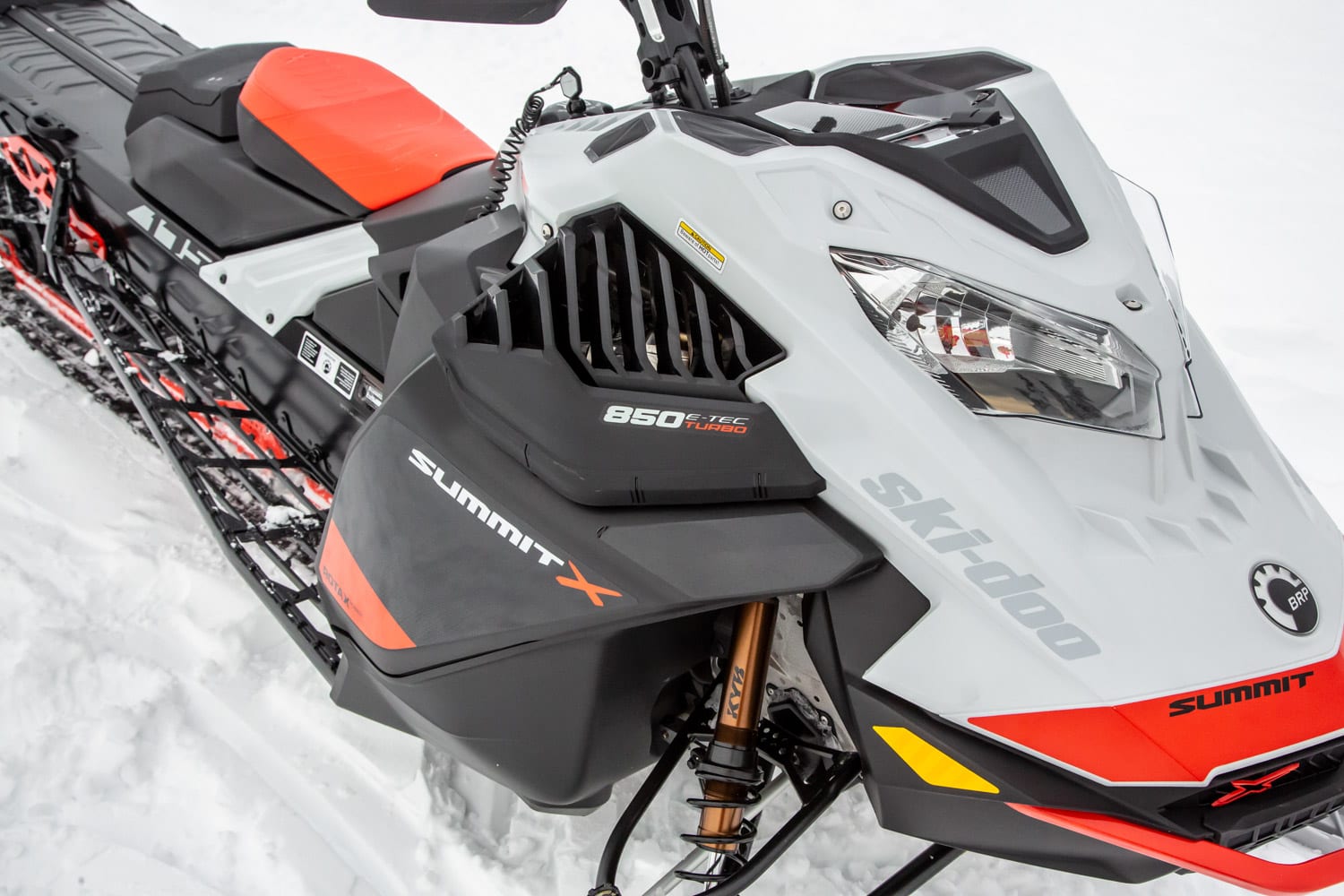
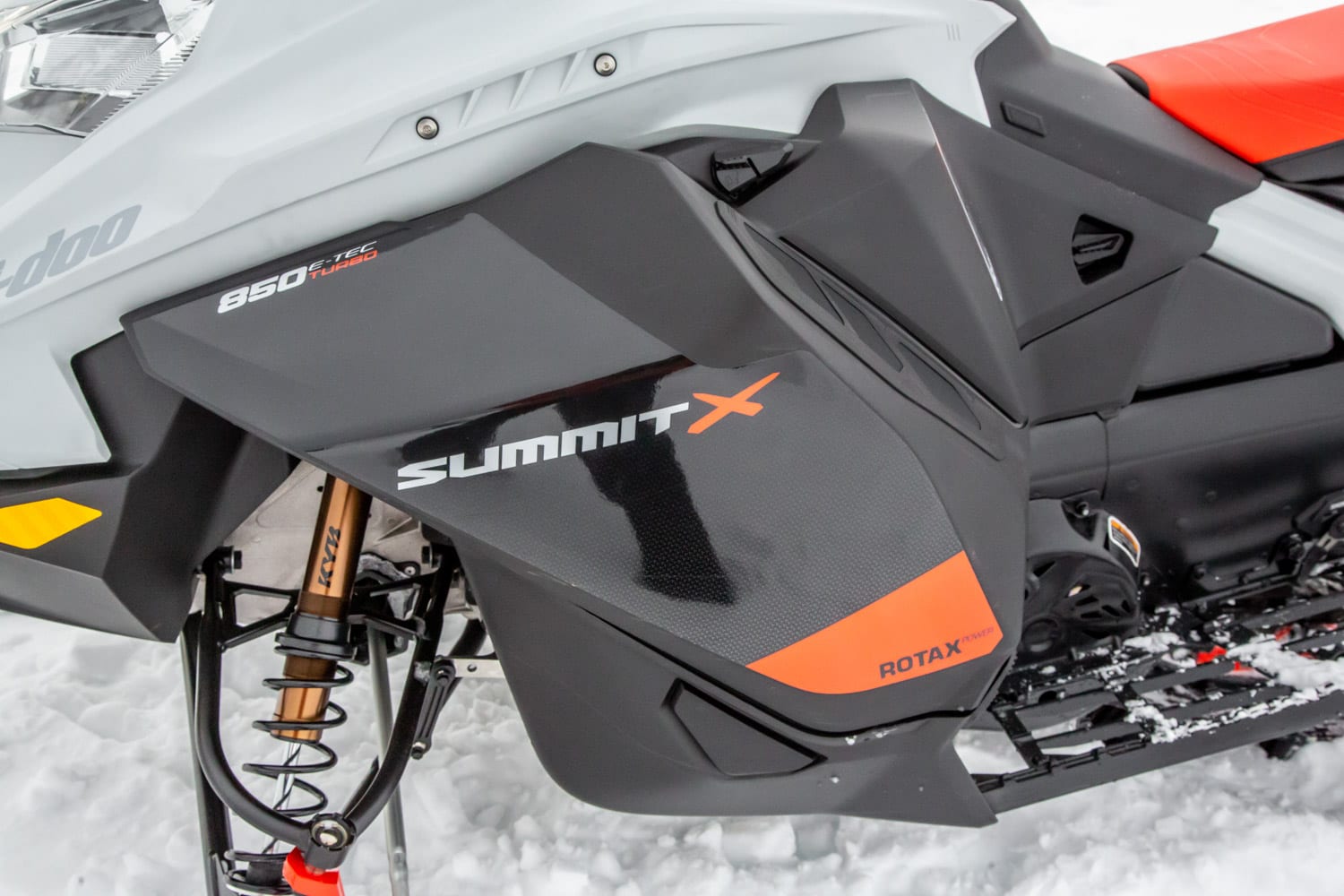
RAS X…
Ski-Doo have been working hard to improve the stability and aggressiveness of their trail model for 2021. To perfect the combination with the new rMotion X rear suspension, BRP engineering introduces a new front suspension, the RAS X. The idea behind the design was to widen the ski gap by 1.5 inches at its widest, and this is adjustable to the rider’s taste. The center-to-center data, i.e. from one rail to the other, is 43.9 inches at its maximum spread, 43 inches adjusted in the center position, and 42.1 inches in the narrower position. Noted that in 2020 the standard gauge was 42.4 inches.
Skis Pilot X…
We’ve been asking for it for a long time, and now Ski-Doo is giving it to us on a silver platter! Many fans were complaining about the lack of grip of the Pilot 5.7 skis when taking aggressive turns, especially with the use of a more aggressive track such as a 1.5 inch Ice Ripper which provides excellent trail traction. The new Pilot X offers a much more aggressive design with 10 percent more lateral surface area for improved cornering traction. The underside of the keel is also completely redesigned. The dual keel concept is used to reduce wobble and increase stability. The ski’s keel has been lengthened by 31 millimeters and is square-shaped to provide better grip and less deportation in turns. The stiffness of the ski, thanks to the redesigned top wall, is increased by 10%. I strongly invite you to read our impressions on this new ski in our test section…
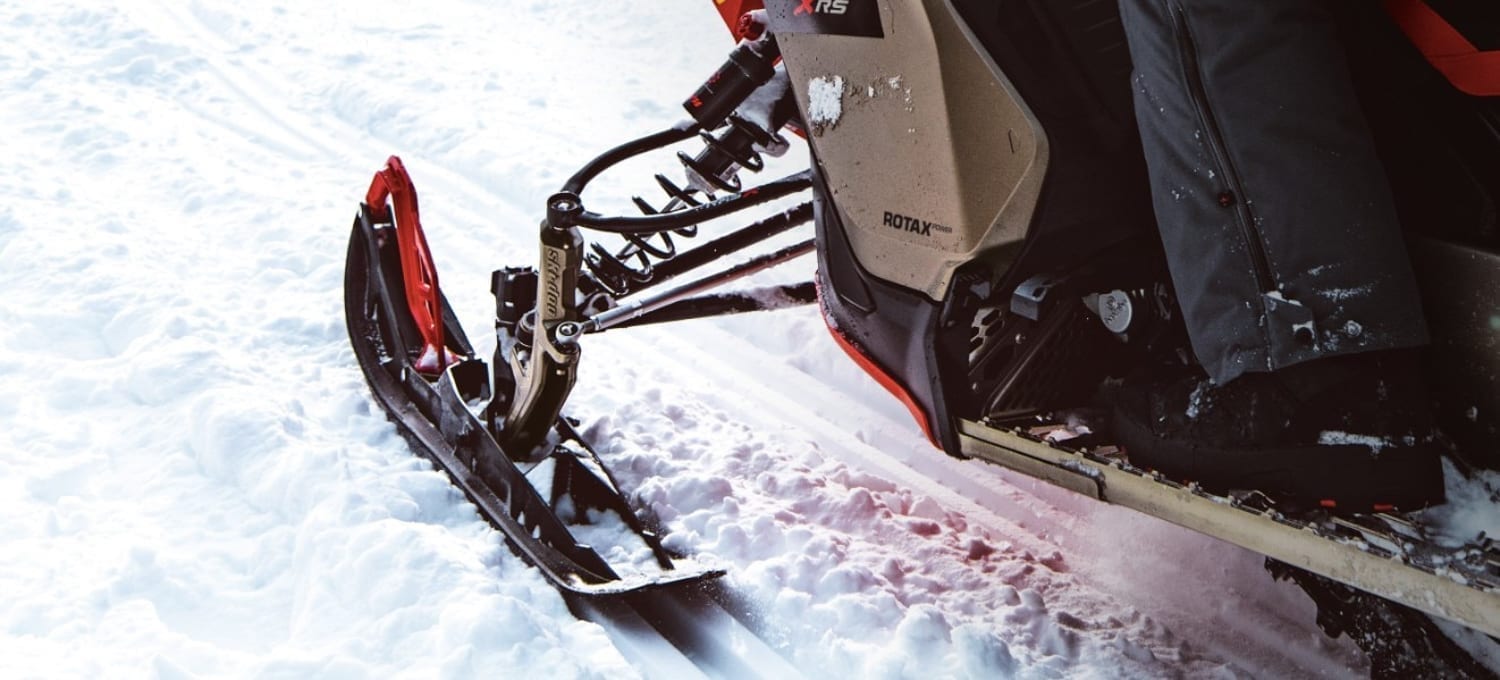
Ski Pilot TX
Like the Pilot X, the adjustable blade version was also redesigned. The goal was to provide better traction in less compact snow and more consistency. This was achieved by increasing the depth of the outer keel by 2 millimeters, improving the exposure area of the sill and increasing the progressiveness of the angle of attack of the sill. The rear part of the keel is also 20 mm shorter and more raised to improve the overall grip.
rMotion X
Although at first glance it looks like the rMotion, think again, it is completely different and the result is just as different… The idea behind the new concept was to provide a suspension that offers more progressiveness in weight transfer and keeps the skis grounded during acceleration. While keeping in mind the possibility of adjustment for those who like to have more transfer. Before we get into the more technical points, don’t miss our summary of the models equipped with this suspension, the result is amazing… How did we get there now? The engineers started by lengthening the front swingarm by 30 mm with a shock absorber also lengthened by 15 mm. The grip of the swingarm on the rail was also repositioned 7 mm higher changing the angle of attack of the arm. To allow more weight transfer, the arm’s grip on the rail is equipped with an adjustable cam in two positions allowing to modify the angle of attack of the swing arm. So by positioning the cam in a lower position, the suspension offers more weight transfer, in the high position, the skis are nailed to the ground at all times. Still in the continuity of weight reduction, the rear arm has been refined and lightened, combined with new rear wheels that have also been slimmed down, a total reduction of 5 pounds. Although the handling is improved, the absorption capacity of the rMotion X is not sacrificed; it offers 22 millimeters more than its sister rMotion…

New 600 CC EFI engine
In an effort to standardize and reduce operating and production costs, Ski-Doo is replacing two entry-level engines with one. This new 600 CC with fuel injection is based on the same concept as the 600R E-TEC, in fact it is the same base with a different head and cylinders. The same intake bodies as the 850 versions are used. The injectors are located on the intake body, just before the intake valves (Reed Valve). This engine, which does not have an exhaust valve, has a mechanical oil pump and develops 85 horsepower. The result is a reliable engine that requires little maintenance and is more economical than the old versions, with a fuel consumption of about 13.3 liters per 100 kilometers. This introduction relegates the fan-cooled 550 CC version and the carbureted 600 version to oblivion.
Backcountry Sport
The new Backcountry Sport replaces the Summit Sport version. Based on the Gen4 Chassis, it is offered with two engine choices, either the 4-stroke 600 ACE or the new 600EFI. Electric start, cMotion rear and RAS 2 front suspension with DS2 skis, 146-inch Cobra track with 1.6-inch studs are among the newcomer’s standard features.
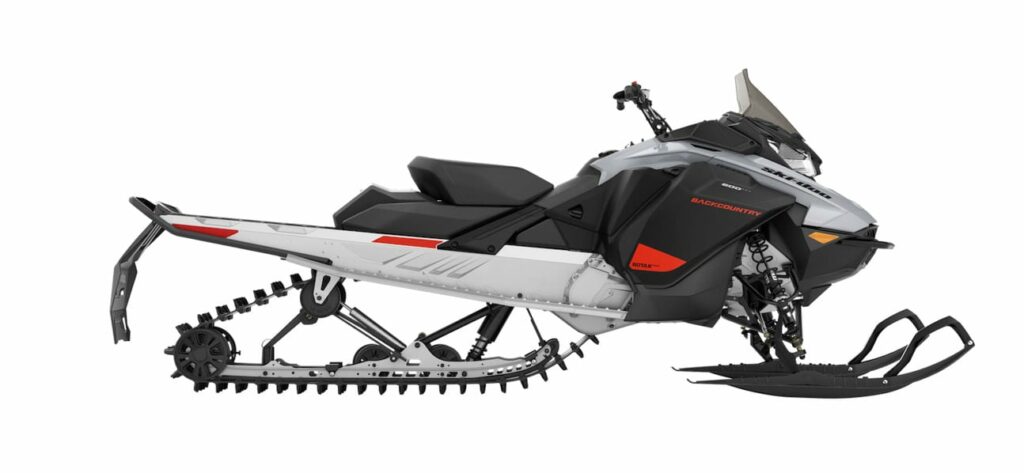
Tundra
2021 marks the arrival of all models on the Gen4 chassis, including the new Tundra! Two engine options are available, the 4-stroke 600 ACE or the new 600 two-stroke EFI. Standard equipment includes telescopic front suspension, a 154-inch track with articulated SC-5U rear suspension in LT version.
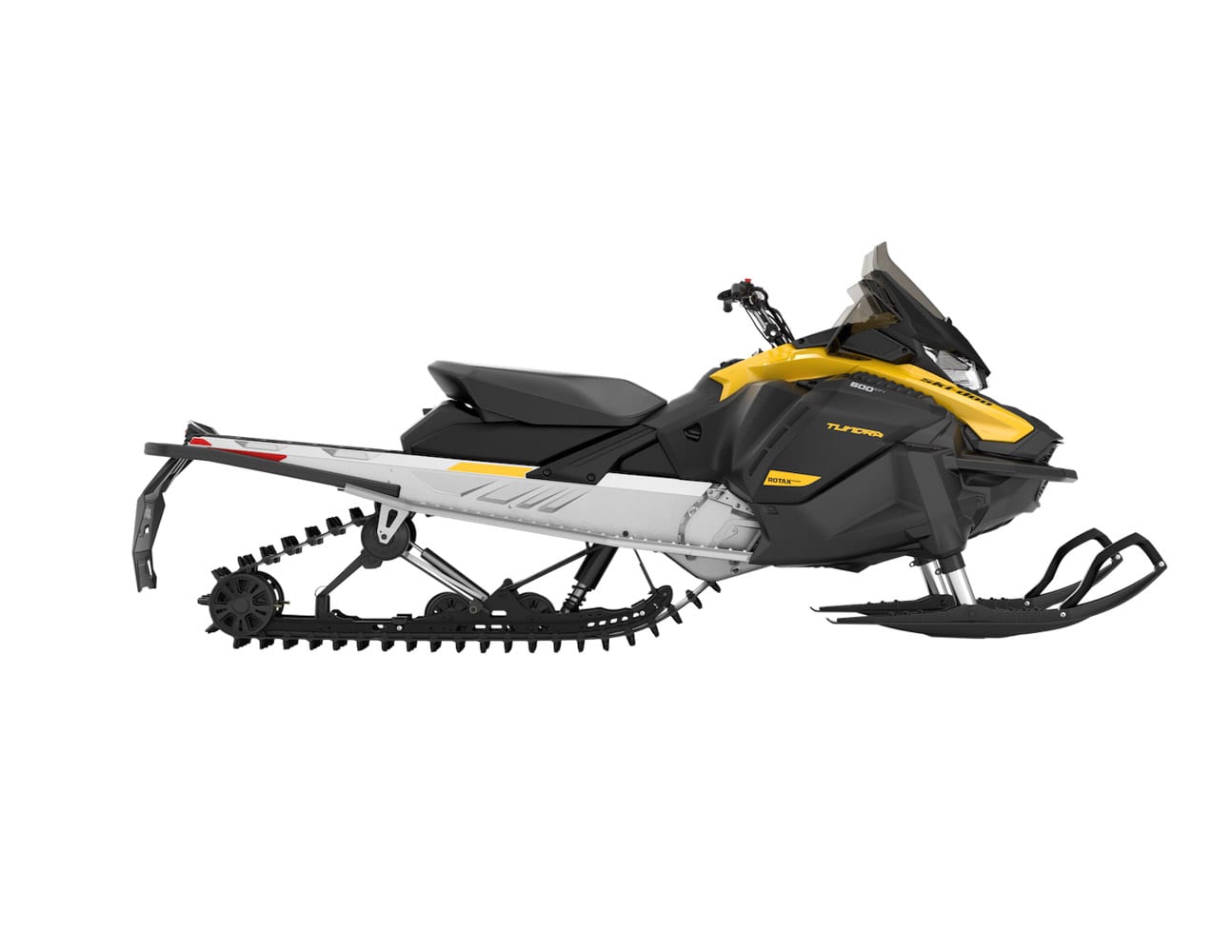
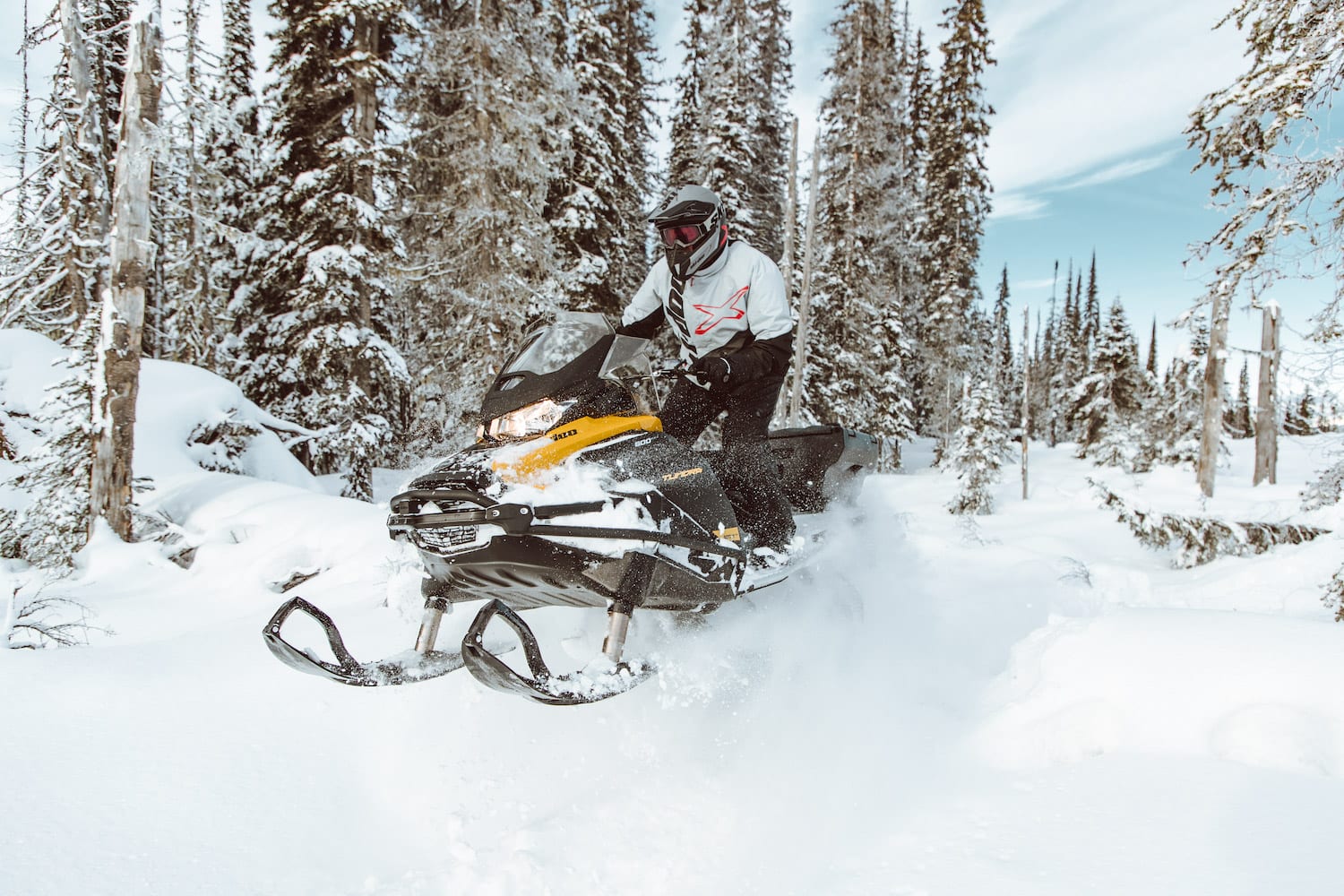
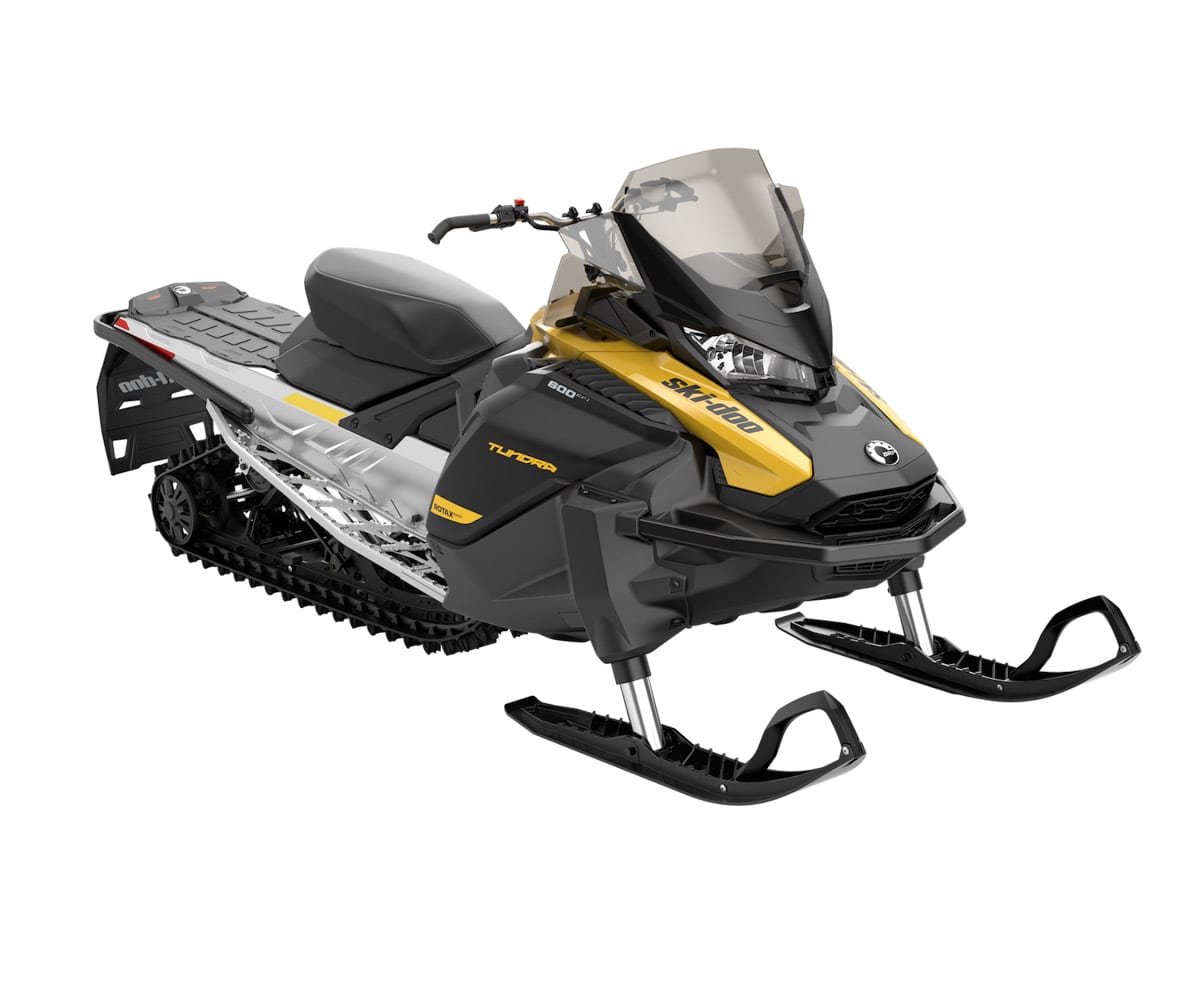
Skandic Sport
Following on from the Gen4 chassis, Ski-Doo is bringing the Skandic Sport into its line-up. This little workhorse will come with the new 600 CC EFI with 85 horsepower, a chain guard, a 154 X 20 X 1.25 inch track, an articulated SC-5U rear suspension, a tunnel cover plate and a rear storage box. A 20 inches at a low price…
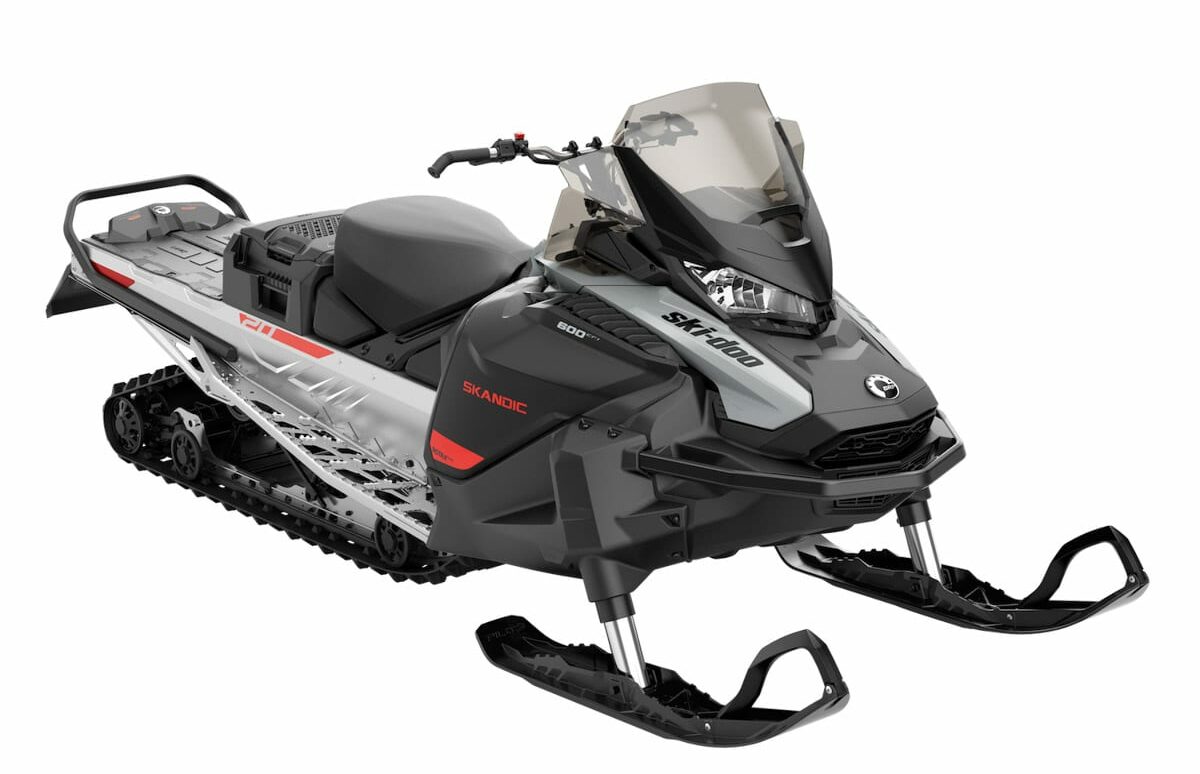
Expedition SWT…
In the upgraded configuration, you’ll have three engine choices for 2021, the 600R E-TEC, the 900 ACE and the 900 ACE turbo. It gives you all the amenities for big jobs, a Multi-LinQ plate with rack and hitch, Easy Shift transmission with reverse button and a 24 X 154 X 1.5 inch Cobra track for huge traction.
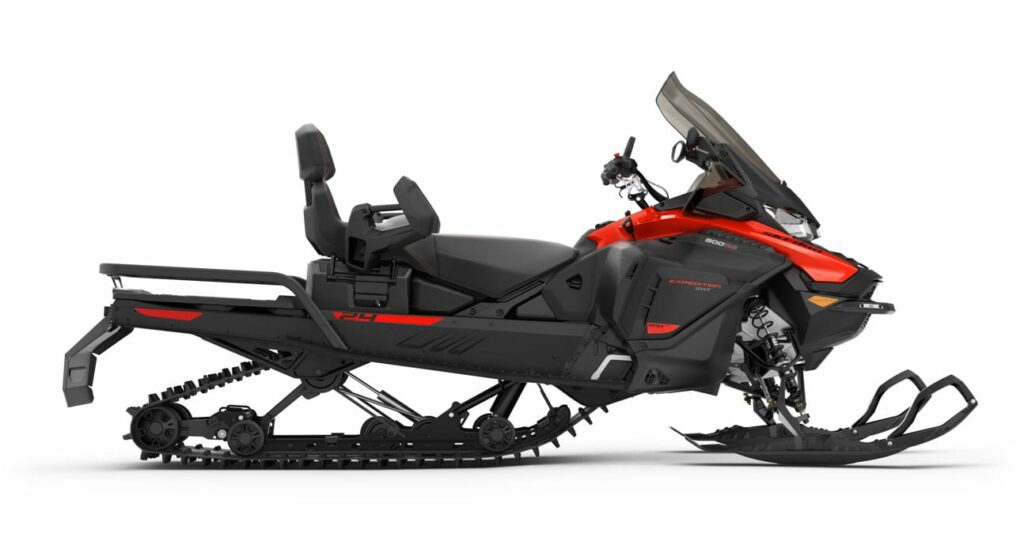
Rev Gen4 = weight reduction
The comparisons speak for themselves: the introduction of the Gen4 chassis in the utility lineup brings considerable weight reductions… The Skandic Sport 600 EFI is 80 pounds lighter than a fan-cooled Skandic WT 550, 45 pounds lighter in SWT version.
New LinQ Sled
The LinQ excitement continues with a 485 liter utility sled! It is rain resistant and has two removable two-piece lids. The two lids allow for the use of LinQ accessories such as gas cans, storage bags, etc. To prevent merchandise from shifting inside, it has pre-molded slots to allow for the addition of dividers. Really well thought out…
New dial and control
The new panoramic LCD display offers a 7.8 inch wide color display. The left side of the dial displays vehicle information; the middle section displays speed, RPM, fuel, etc. And finally, the far right part displays all the functions and applications. The marketing people mention the arrival of the BRP Go navigation application for the new season, to be continued. This new dial allows Bluetooth connection with your smartphone. And what about the big control button that can be easily used with gloves on!!!
Glove box extension
On the lookout for new technologies, Ski-Doo offers us the possibility to use our smartphone safely on your Ski-Doo snowmobile. The new cell phone mounting kit is heated (to save your battery), has a protective touch screen and an opening for charging…
2021 marks a unique lineup for Rev Gen4. We say goodbye to the REV-XU chassis in utility, REV-XP in trail snowmobiles, etc. 2021 also marks the demise of fan-cooled snowmobiles at the Valcourt manufacturer, which represents over six decades of history!!!





